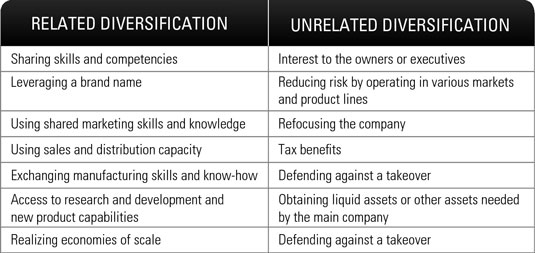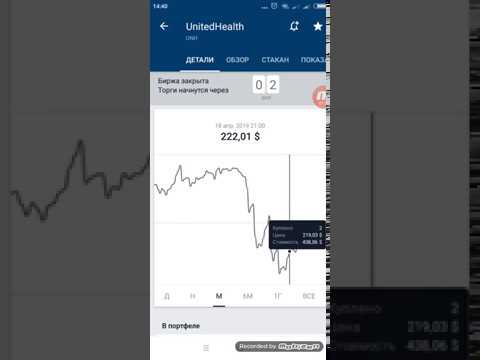Adjusted R Squared Meaning, Formula Calculate Adjusted R^2
Contents:


A value of 1 indicates that the response variable can be perfectly explained by the predictor variables. A value of 0 indicates that the response variable cannot be explained by the predictor variables at all. All data contain a natural amount of variability that is unexplainable. Unfortunately, R-squared doesn’t respect this natural ceiling. Chasing a high R-squared value can push us to include too many predictors in an attempt to explain the unexplainable.
Regional clozapine, ECT and lithium usage inversely associated … – Nature.com
Regional clozapine, ECT and lithium usage inversely associated ….
Posted: Tue, 14 Mar 2023 07:00:00 GMT [source]
When we fit linear regression models we often calculate the R-squared value of the model. Using adjusted R-squared over R-squared may be favored because of its ability to make a more accurate view of the correlation between one variable and another. Adjusted R-squared does this by taking into account how many independent variables are added to a particular model against which the stock index is measured. In other words, goodness-of-fit is a statistical hypothesis test to see how well sample data fit a distribution from a population with anormal distribution. Because of this, many investment professionals prefer using adjusted R-squared because it has the potential to be more accurate. Furthermore, investors can gain additional information about what is affecting a stock by testing various independent variables using the adjusted R-squared model.
How to Calculate R-Squared
The higher the value, the better the regression equation, which implies that the independent variable chosen to determine the dependent variable is chosen appropriately. Ideally, a researcher will look for the coefficient of determination closest to 100%. As we described earlier, R-squared increases or remains the same as we add new predictors to the multiple regression model.
Regression is a statistical measurement that attempts to determine the strength of the relationship between one dependent variable and a series of other variables. In some problems that are hard to model, an R-squared as low as 0.5 may be considered a good one. There is no rule of thumb that determines whether the R-squared is good or bad.
There is no universal rule on how to incorporate the statistical measure in assessing a model. The context of the experiment or forecast is extremely important, and, in different scenarios, the insights from the metric can vary. A low r-squared figure is generally a bad sign for predictive models. Let’s use our understanding from the previous sections to walk through an example.
Zero-ETL, ChatGPT, And The Future of Data Engineering
If you add more and more useless variables to a model, adjusted r-squared will decrease. If you add more useful variables, adjusted r-squared will increase. Its value never decreases no matter the number of variables we add to our regression model. That is, even if we are adding redundant variables to the data, the value of R-squared does not decrease.
Because of the way it’s calculated, adjusted R-squared can be used to compare the fit of regression models with different numbers of predictor variables. Multicollinearity appears when there is strong correspondence among two or more independent variables in a multiple regression model. So, this explains why the R-squared value gives us the variation in the target variable given by the variation in independent variables. The sum of squares due to regression measures how well the regression model represents the data used for modeling. The total sum of squares measures the variation in the observed data . Although the statistical measure provides some useful insights regarding the regression model, the user should not rely only on the measure in the assessment of a statistical model.
R-square value and adjusted r-square value 0.957, 0.955 respectively. But when an attribute Id is added, which is an irrelevant attribute, gives r-square and adjusted r-square equal to 0.958, 0.954 respectively. If you liked this article, please follow me to receive tips, how-tos and programming advice on regression and time series analysis. Building real estate valuation models with comparative approach through case-based reasoning. The formula for Adjusted-R² yields negative values when R² falls below p/(N-1) thereby limiting the use of Adjusted-R² to only values of R² that are above p/(N-1). This tussle between our desire to increase R² and the need to minimize over-fitting has led to the creation of another goodness-of-fit measure called the Adjusted-R².
Adjusted R-Squared
If the revenue scale was taken in “Hundreds of Rupees” (i.e. adjusted r squared interpretation would be 1, 2, 3, etc.) then we might get an RSS of about 0.54 . If the same high R-squared translates to the validation set, then we can say that the model is a good fit. In some fields, it is entirely expected that your R-squared values will be low. For example, any field that attempts to predict human behavior, such as psychology, typically has R-squared values lower than 50%. Humans are simply harder to predict than, say, physical processes. There are two major reasons why it can be just fine to have low R-squared values.
R-squared explains to what extent the variance of one variable explains the variance of the second variable. So, if the R2of a model is 0.50, then approximately half of the observed variation can be explained by the model’s inputs. The adjusted R-squared compares the descriptive power of regression models that include diverse numbers of predictors. Every predictor added to a model increases R-squared and never decreases it. R-square test is used to determine the goodness of fit in regression analysis.
We’ve practically seen why adjusted R-squared is a more reliable measure of goodness of fit in multiple regression problems. We’ve discussed the way to interpret R-squared and found out the way to detect overfitting and underfitting using R-squared. Explained variation is the difference between the predicted value (y-hat) and the mean of already available ‘y’ values (y-bar). It is the variation in ‘y’ that is explained by a regression model. Adding a third observation will introduce a level of freedom in actually determining the relation between X and y and it will increase for every new observation. That is, the degree of freedom for a regression model with 3 observations is equal to 1 and will keep on increasing with additional observations.
Goodness of fit implies how better regression model is fitted to the data points. Also, it can lead to overfitting of the model if there are large no. of variables. A notable exception is regression models that are fitted using the Nonlinear Least Squares estimation technique. The NLS estimator seeks to minimizes the sum of squares of residual errors thereby making R² applicable to NLS regression models. R-squared, often written R2, is the proportion of the variance in the response variable that can be explained by the predictor variables in a linear regression model. As you can see, adding a random independent variable did not help in explaining the variation in the target variable.
- However, it doesn’t tell you whether your chosen model is good or bad, nor will it tell you whether the data and predictions are biased.
- As we mentioned earlier, R-squared measures the variation that is explained by a regression model.
- Conversely, it will decrease when a predictor improves the model less than what is predicted by chance.
- An example that explains such an occurrence is provided below.
- INVESTMENT BANKING RESOURCESLearn the foundation of Investment banking, financial modeling, valuations and more.
- A mutual fund with a high R-squared correlates highly with abenchmark.
However, it doesn’t tell you whether your chosen model is good or bad, nor will it tell you whether the data and predictions are biased. The black dashed line is the mean of the already available house prices . The green line is the regression model of the house price with number of rooms as the predictor. The blue dot is the number of rooms for which we have to predict the house price. The mean value (y-bar) of the already available house prices is 21.
Data Engineering Awards 2023: Celebrating the Pioneers of Data-Driven Solutions
100% indicates that the model explains all the variability of the response data around its mean. 0% indicates that the model explains none of the variability of the response data around its mean. Adjusted R Squared is thus a better model evaluator and can correlate the variables more efficiently than R Squared. The value of Adjusted R Squared decreases as k increases also while considering R Squared acting a penalization factor for a bad variable and rewarding factor for a good or significant variable. In this case, there are infinite possibilities of drawing a best fitting regression line passing through the one data point. 88% of the variance in Height is explained by Shoe Size, which is commonly seen as a significant amount of the variance being explained.
Later in this article, we’ll look at some alternatives to R-squared for nonlinear regression models. One misconception about regression analysis is that a low R-squared value is always a bad thing. For example, some data sets or fields of study have an inherently greater amount of unexplained variation. In this case, R-squared values are naturally going to be lower. Investigators can make useful conclusions about the data even with a low R-squared value.
It is also backwards-looking—it is not a predictor of future results. What qualifies as a “good” R-squared value will depend on the context. In some fields, such as the social sciences, even a relatively low R-squared value, such as 0.5, could be considered relatively strong.
Let us try to find out the relation between the height of the students of a class and the GPA grade of those students. The dependent variable in this regression equation is the student’s GPA, and the independent variable is the height of the students. Hopefully, this has given you a better understanding of things. You can now determine prudently which independent variables are helpful in predicting the output of your regression problem. As we discussed before, RSS gives us the total square of the distance of actual points from the regression line.
However, a very low R-squared generally indicates underfitting, which means adding additional relevant features or using a complex model might help. In the data frame, the index denotes the number of features added to the model. We can see a decrease in the adjusted R-squared as soon as we started adding the random features to the model. It only increases if the newly added predictor improves the model’s predicting power. However, similar biases can occur when your linear model is missing important predictors, polynomial terms, and interaction terms.

The most vital difference between adjusted R-squared and R-squared is simply that adjusted R-squared considers and tests different independent variables against the model and R-squared does not. One of the most essential limits to using this model is that R-squared cannot be used to determine whether or not the coefficient estimates and predictions are biased. Furthermore, in multiple linear regression, the R-squared can not tell us which regression variable is more important than the other. Let us try and understand the concept of adjusted R square with the help of another example.
Compared to a model with additional input variables, a lower adjusted R-squared indicates that the additional input variables are not adding value to the model. Variance inflation factor is a measure of the amount of multicollinearity in a set of multiple regression variables. Adjusted R-squared is a modified version of R-squared that has been adjusted for the number of predictors in the model.

This is done because such additions of independent variables usually increase the reliability of that model—meaning, for investors, the correlation with the index. Coefficient Of DeterminationCoefficient of determination, also known as R Squared determines the extent of the variance of the dependent variable which can be explained by the independent variable. Therefore, the higher the coefficient, the better the regression equation is, as it implies that the independent variable is chosen wisely. We can see the difference between R-squared and Adjusted R-squared values if we add a random independent variable to our model. In the above mutual information scores, we can see that LSTAT has a strong relationship with the target variable and the three random features that we added have no relationship with the target. We’ll use these mutual information scores and incrementally add one feature at a time to the model and record the R-squared and adjusted R-squared scores.
What’s the Relationship Between R-Squared and Beta? – Investopedia
What’s the Relationship Between R-Squared and Beta?.
Posted: Sat, 25 Mar 2017 15:24:45 GMT [source]
Unexplained variation is the difference between true/actual value and y-hat. It’s the variation in ‘y’ that is not captured/explained by a regression model. The fitted line plot shows that these data follow a nice tight function and the R-squared is 98.5%, which sounds great. However, look closer to see how the regression line systematically over and under-predicts the data at different points along the curve.
- A value of 0 indicates that the response variable cannot be explained by the predictor variables at all.
- If you liked this article, please follow me to receive tips, how-tos and programming advice on regression and time series analysis.
- Beta measures how large those price changes are relative to a benchmark.
- The dependent variable in this regression equation is the distance covered by the truck driver, and the independent variable is the age of the truck driver.
- This is where adjusted R-squared is useful in measuring correlation.
Overall, R² or Adjusted-R² should not be used for judging the goodness-of-fit of nonlinear regression model. R-squared only works as intended in a simple linear regression model with one explanatory variable. With a multiple regression made up of several independent variables, the R-squared must be adjusted. The Adjusted R-squared takes into account the number of independent variables used for predicting the target variable. In doing so, we can determine whether adding new variables to the model actually increases the model fit.


Responses